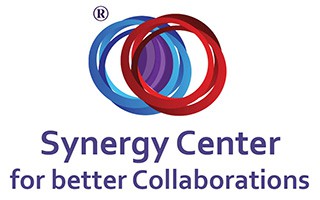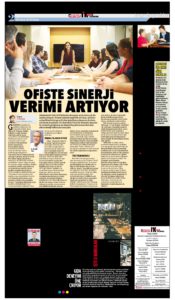To streamline the synergy assimilation process, as well as new technology, culture or procedure, your organization’s vision and culture must embody synergy values. Fairness, openness, and respect and acknowledgment of diversity must feature strongly in the vision and culture of your organization.
But who sets the vision other than the owner or top-tier management themselves?
The top-flight management or ownership must embody synergy values to the highest degree, but vision informs strategic direction and culture. Management behavior must be in-line with vision and culture, since managers are role models.
The degree of synergy must be highest at the administrative level. This means that, to increase the scope of quality of interactions, the managers must demonstrate high levels of commitment to the process.
In what ways do you demonstrate commitment?
- Setting up means to resolve conflicts and/or disputes
- Appointing a prefect, a trustee or a custodian of all matters synergy
- Promoting informal interactions
- Embracing a debriefing process
- Creating a balance between opposites: Differentiation versus integration, decentralization versus centralization, etc.
In a previous article, we discussed the first three points. In this article, we’re going to discuss the latter. Let’s have a deep dive.
Setting up Means to Resolve Conflicts and/or Disputes
As organizations grow larger, so is disorder. Procedures and structures are present for a good reason. Conflicts and disputes arise every time. While rigid boundaries, structures or procedures have been put up in place to instil, restore and maintain order, they contribute to disorder.
Let me explain.
Hierarchy puts organization’s members in different classes or ranks, causing division. If an informal or a less formal occasion is absent for members of different ranks to meet up, open up, share ideas and personal information, socialize or brainstorm, perceptions of unfairness, inequity or “otherness” can arise. These perceptions can spawn feelings of obscurity, invasion or “disconnectedness” depending on how the managers communicate with employees.
In a nut shell, the more rigid and hierarchic an organization structure is, the more “disconnected” the members are. Besides, if an organization doesn’t involve employees in changing a procedure and a one-way communication pattern is prevalent, it can be difficult to assimilate synergy or a new technology, culture or procedure successfully.
The management must find a way to increase employee engagement. One way is to set up a structure to resolve disputes or conflicts. A human resources professional is best placed to oversee the dispute resolution mechanism. But a neutral employee who’s been designed as a trustee of synergy can also prove as an effective mediator of conflicts.
In a conflict or dispute resolution, both sides raise issues, which must orbit around the cause. Topic-specific discussions are invaluable timesavers. When warring parties meet up in a presence of a neutral party, they open up about what’s troubling them about each other. And that’s a good thing, because it allows you to get to the bottom of the problem to find a lasting solution.
Embracing a Debriefing Process
A debriefing process is investigative in nature. It allows the investigator to get to the bottom of issues, and find solutions without making wrong conclusions. The process removes the excuse to lay blame. The resolution can recommend ways to learn to blame self – not others.
But employees usually view words such as “investigation”, “debrief” or “review” negatively. Instead, you can label the occasion differently. Less formal and less weighty labels such as “smart-up” can be useful to reduce negative perceptions. For a mediator, it can be a tall order.
You must guard against getting involved in the conflict and losing your neutrality status. Things can be said that can hurt your feelings, and conflicting parties may do so deliberately to distract you from your main focus: reaching correct conclusions. You must be a strong character to be a mediator.
Creating a Balance between Opposites
In organizations, as in societies, opposites exist. Besides, opinions can switch to either side. For effective leadership, switching between both ends of the spectrum can prove beneficial. The key takeaway is to know when it’s right and what context is appropriate.
Postmodern organizations, just as political parties, experiment with sides, switching sides when they deem fit. It’s not a matter of “love lost” – “sworn enemy” – situation, but a flexible situation in which one can change heart. One whom you’ve been fighting with is your close ally. Switching sides, like a pendulum, can promote tolerance for diversity or differentiation. While switching sides can be beneficial, it’s risky. A miscalculation of step can cause costly errors, wastage and loss of power.
Luckily, the synergy approach provides us with the tools to cope with the consequences of changing sides. In addition, clarity of boundaries can remain unchanged, but flexible enough to permit differentiation without loss of power at the headquarters. An effective way to create a balance is to centralize decision-making and control and decentralize implementation.
You can also balance organization’s functions, but you must consider ones which flex and rigidify boundaries. Organization’s functions are rigid because of the following:
- Investigation or debriefing
- Control
- Structure e.g. hierarchy, procedures, etc.
- Legal consultancy
- Benchmarks on procedures and outcomes
To “flex” or “recalibrate” boundaries, consider the following functions:
- Human resources e.g. conflict resolution and team development
- Training
- Employee welfare
- Organizational development
- Research and development
- Client liaison
- Strategy
- Marketing
- Direct coordination
An awareness of these enabling functions can help to increase the scope of quality forms of interactions, especially synergy. Empower your employees with ability to control functions, which rigidify boundaries, but leave managers with an authority to be final decision-makers.
As a Brief Summary…
Managers and owners of organizations must demonstrate high levels of commitment to the synergy assimilation process. Commitment can be seen in how they behave and in how they embed the synergy values in the vision and culture of the organization. Measures such as conflict resolution, debriefing, creation of a balance between opposites, appointment of synergy trustees, and promotion of informal interactions embody a management that’s highly committed to the synergy process.





ergfir nolikz
9 Jan 2019Great site. Plenty of helpful info here. I’m sending it to several friends ans additionally sharing in delicious. And certainly, thank you in your effort!